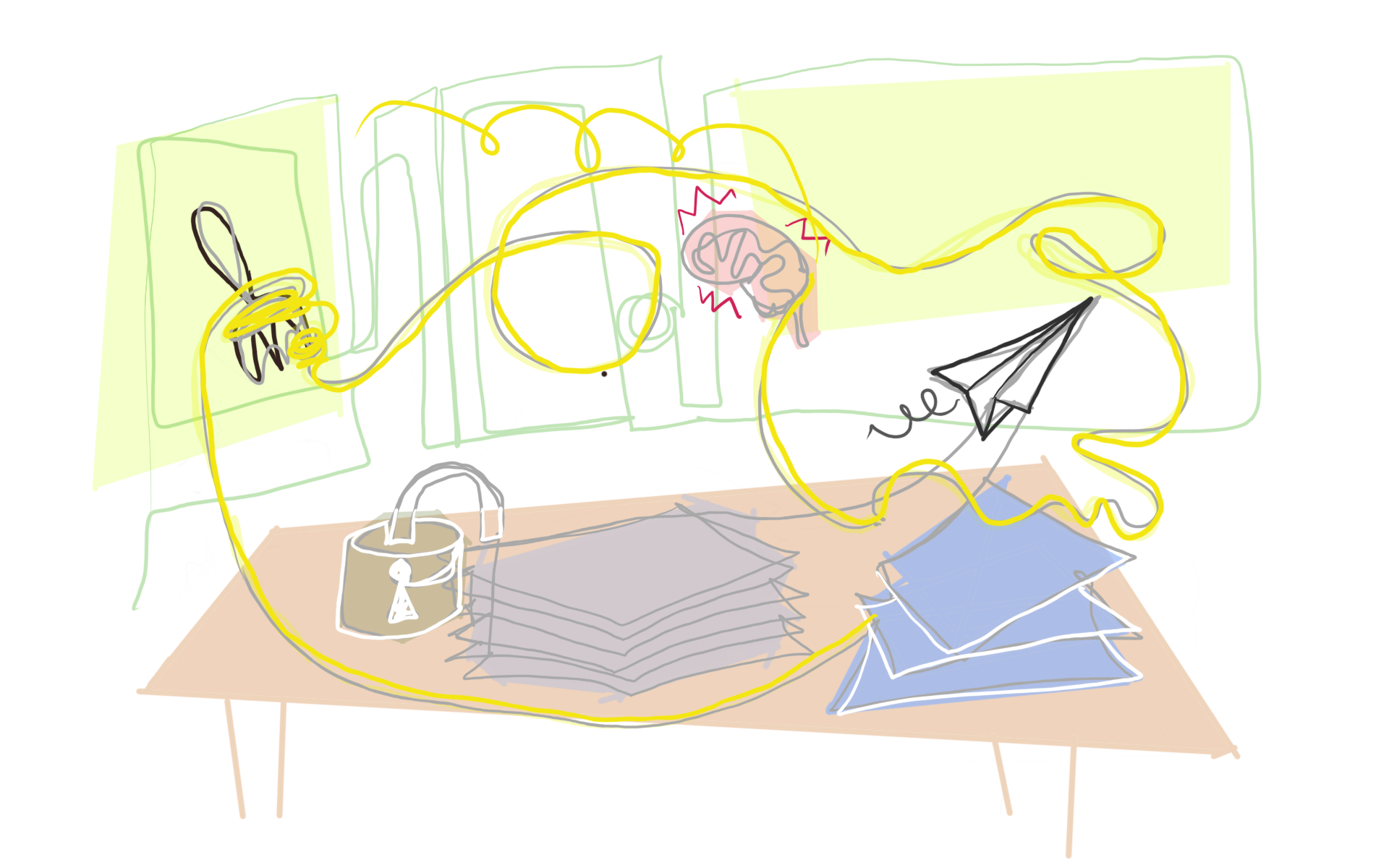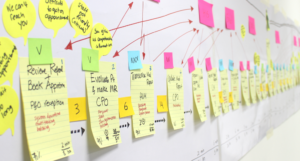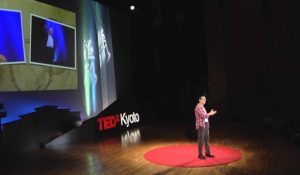One of the most recommended ways to introduce a new methodology to your system is to start small and share easy quick wins.
A neighboring team at work asked if I could help with their paper clutter issue as they were one of the few teams who still rely on physical paper work according to some regulations.
The clutter represents the obvious physical problem but is less important compared to other challenges such as the confidentiality of the information and the risk of loss of sensitive documents, in addition to all the other problems of space, time needed to find the right document under all those files…etc.
This was another opportunity to test design thinking at the work place with a simple straightforward problem. So, I facilitated couple of workshops with the team and guided them through the steps of design thinking without even mentioning it at all. The first workshop was mostly about defining and reframing the problem with empathy to their pain points and struggles with the paper work. Then we have converged on the most important needs and went to the next workshop of ideating and testing some possible solutions. During both workshops, we went to the “genba” to understand the process and appreciate the problems first hand, then to visualize and prototype the changes to be made to the physical space. Lean 5 S was utilized on the second stage and we came up with few useful changes to make.
One of the highlights of the defining the problem is a spaghetti diagram that was drawn by one of the team members without previous knowledge of how to draw it. It was a very intuitive thing to do and the image spoke volumes of the unnecessary motion of the staff, which was then reduced with a simpler path on the same diagram.
I have to say that the feedback throughout the work was very encouraging in spite of the seemingly simple problem and solutions selected, but I guess it’s the human centered approach that made all the difference. Then was the reveal of the design thinking approach towards the end of the final meeting with the team.
I believe that design thinking is such a versatile philosophy and methodology that could be applied across a wide spectrum of problems, from the very wicked ones, to the clutter in the office. This and similar quick wins are great exercises for the more complex of problems and should never be underestimated.




